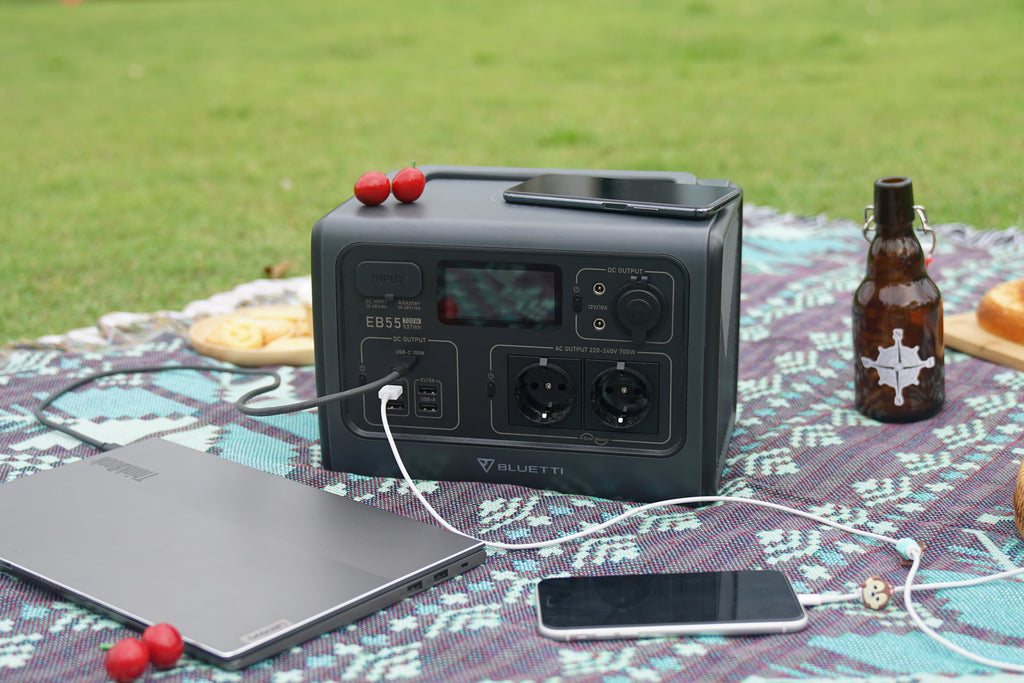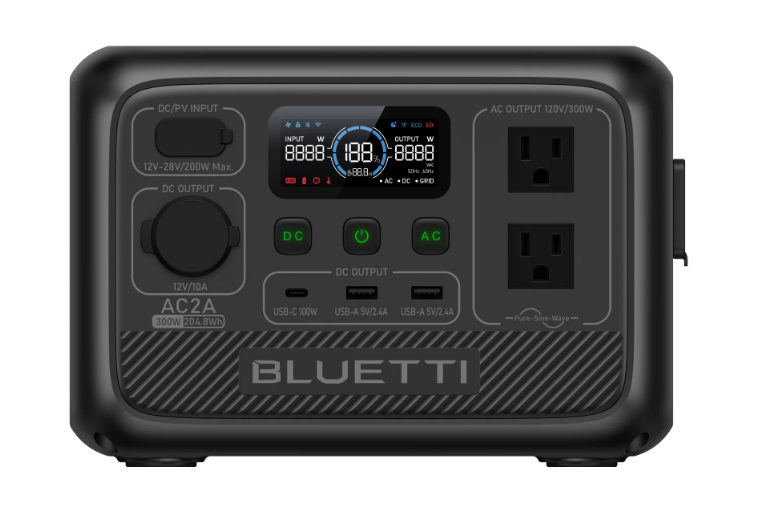Electricity, the silent force keeping the world bright and most often disregarded in our everyday lives as a foregone conclusion, is then brought to attention with a change towards renewable energy, where solar power stations rise as a beacon for a sustainable life. But to truly harness their potential, we need to speak their language - a language of watts, volts, amps, and ohms.
These may be big terms, which sound quite intricate to be dealt with at first, but they are nothing but the very keys to tap the capability of a power station to energize our appliances efficiently. This guide is your compass, the needle pointing to the unraveling of these concepts and the shedding of light on how electricity works.
What Are Watts, Volts, Amps, and Ohms?
Setting off into an electrical universe, then, one must be well acquainted with the basic lingo. These are the very basic building blocks that help us in understanding if a power station and your appliances are a match made in heaven. More often, the culprit behind appliance mishaps is misjudging the voltage.
But the beauty lies in the interrelation of these terms, which makes the effort to calculate them effortlessly. Let's get into each term and uncoil one by one.
The Role of Amps
Think of it as a river of electricity flowing over the circuitry in a house. This river is measured in 'Amps', shortened from amperage, named after André-Marie Ampère, the pioneer of electromagnetism. It describes the rate of flow of the electric current or the number of electrons that are flowing through the wire.
Flowing into the receptacle outlet circuits and to the general-purpose lighting, the river has a current of 15 amps, within our homes. But on more recent constructions, the river often grows to 20 amps, energizing the laundry room, the bathroom, the kitchen, and appliances like refrigerators or dishwashers. The river roars at a mighty 30 amps for larger devices such as electric clothes dryers.
To find the rate of this electrical river, the formula will take the form of: Amps = Watts/Volts. This implies that an electric device of 3600W would have an amperage of 15A and a voltage of 240V. The larger the amperage, the mightier the river, allowing more electricity to flow through the circuit.
What Are Watts?
Just think of electricity as the workhorse energy, tirelessly powering our appliances and whose strength is measured in 'watts.' This is a unit of power, one that denotes work done by electricity.
Take for instance the appliance that uses one watt. It will be tantamount to a single horse which normally draws one amp at 120 volts. Now, in regard to the larger appliances, say the microwave or the television, think of them as a team of horses, as they need more watts to run compared to smaller appliances such as the lights.
The power of our electric workhorse can be figured by the formula: Watts = Amps × Volts. For instance, an electrical gadget consuming 10 amperes and working at 240 volts has a wattage of 2400W which is equal to a team of 2400 horses. The higher the wattage, the stronger the team, and the greater the appliance’s output and power.
Defining Volts
Imagine electricity as a river of flowing water through the wire. 'Volts', or voltage, is like the pressure that would drive along such a river. It is also akin to the speed in which the individual water droplets (or, in this case, electrons) travel through the circuit.
Just as there are different speeds for different rivers, so do the appliances need varying volts. Small home appliances, including TVs, bulbs, chargers, and computers are like gentle streams that need only 120 volts. In contrast, roaring rivers are just large and power-hungry appliances in the form of electric ranges and clothes dryers, space-heating systems, and air-conditioning units—all of which run at a hefty 240 volts.
The formula that relates these electric river flow, speeds, is found in the equation: Volts = Watts / Amps. For example, a 500-watt appliance (the work done) with a current flow of 25 amps would give a voltage of 20V--much like a gentle stream.
Ohms Explained
Resistance in ohms has to do with the electrical circuit, named after the scientist Georg Simon Ohm. This is basically the resistance the wiring and the appliances offer an electric current. Obviously, in the presence of more resistance, more voltage or amperage is needed to get through this resistance. The formula that helps us find the resistance is Ohm = Volts / Amps.
Hertz Explained
Hertz, abbreviated as Hz, translates to the frequency of the change in the direction of the flow of electricity. It is the measure of how fast this change takes place in a single second. For instance, 50Hz connotes that every second, the direction of change of the flow of electricity to the load alternates 50 times.
Myths About Amps, Watts, and Volts

There are three basic units that would express various characteristics of electricity: amps, watts, and volts. But in relation to these, many people would have some misbelief or misunderstanding. The forthcoming section will help clear up the most common myths about amps, watts, and volts.
Myth 1: Higher Voltage Equals Higher Power
Most people believe that high voltage contains more power, but it is not always true. Power is actually the rate at which energy is either consumed or generated, and it is determined with the help of voltage and current. For example, a high current with low voltage can be the same power as a high voltage with low current. The voltage is only high if both the voltage and current are high.
Myth 2: Voltage and Current Ratings Can Be Swapped
Another myth is that all electrical devices can run over the full range of voltages and currents. In fact, that is not so. Every device is designed to work within some range of voltage and current. To put it simply, if you use a device out of its specified range, such use will cause damage, poor performance, and even hazards that follow in the form of shocks or fire.
Myth 3: More Amps Are Always Better
A final myth to debunk would be that more amps are always better. Amps are a measure of the amount of electric current flowing through a circuit, and various devices and tasks will require varying amounts of current. Sometimes it will require more current flowing in the current supply to the device or in the running of a task. Other times, it may be destructive. Excess current will lead to an overheating of electrical components or give rise to breakdown.
BLUETTI Examples to Better Understand Amps, Watts, and Volts
BLUETTI EB55

Meet the BLUETTI EB55, your ideal power companion for all your devices and scenarios. Plus, with the addition of a 700W inverter at AC pure sine wave, the burst output is up to 1400W. This battery promises hours of uninterrupted power with a 537Wh capacity. The capacity it gives is quite promising; hence, this LiFePO₄ battery is considered high durability and safe over 2,500 life cycles to 80%.
The EB55 also comprises 12 outputs with 4 AC outlets and 4 USB ports, 2 DC ports, and 2 wireless charging pads, and it can further be recharged through 6 different modes—AC, Solar, Car, Generator, AC+Solar, and Dual AC. It can accept a solar input up to 200W, meaning a quick charging of roughly 400W of dual charging. Super eco-friendly, free of gas, silent, and cost-efficient, EB55 proves to be the most reliable for camping, in cases of emergencies, or at home.
BLUETTI AC2A

So now, meet the BLUETTI AC2A. It is a 300W AC output power dynamo that bursts up to 600W. It features a 204.8Wh capacity that goes on strong for long-lasting battery life. And, it sprints to 80% charge in 45 minutes, turbo charging at 270W. The LiFePO₄ battery, known for its safety and durability, boasts over 3,000 charge cycles. This is coupled with the added advantage of 45dB or less whisper-quiet operation, smart remote control functionalities via the BLUETTI app, and seamless transition to a UPS mode in less than 20ms.
BLUETTI AC70

Introducing the BLUETTI AC70—a powerhouse with a 1,000W rated power and peaks up to 2,000W. The 768Wh capacity ensures that battery life just doesn't quit. And with turbocharging to 950W, it can sprint to an 80% charge in only 45 minutes. It also features 500W rapid intake of solar hence getting fully charged from the solar panels within 2 hours. The AC70 has seven outlets with among them two AC outlets, four USB ports, and one DC port. Plus, it's powered by a safe and strong LiFePO₄ battery designed for over 3,000 life cycles. The smart remote control is further availed by the AC70 via the BLUETTI app, with a smooth UPS function that will kick in within 20ms.
Final Thoughts
Finally, knowledge of some electricity basics would assist in making the right decisions regarding the use and requirements of electricity, and at the same time safety. So, shop for the right wire size, solar inverter, and portable power station in line with your needs while knowing what current, voltage, resistance, and power your circuits and appliances are handling. You could add that it helps you save on energy, money in terms of minimal power usage, and utilization of other sources such as solar panels. Without forgetting, BLUETTI has various types of portable power stations that can meet your needs either at home or for outdoor activities like camping. They are environmentally friendly, robust, and user-friendly.




